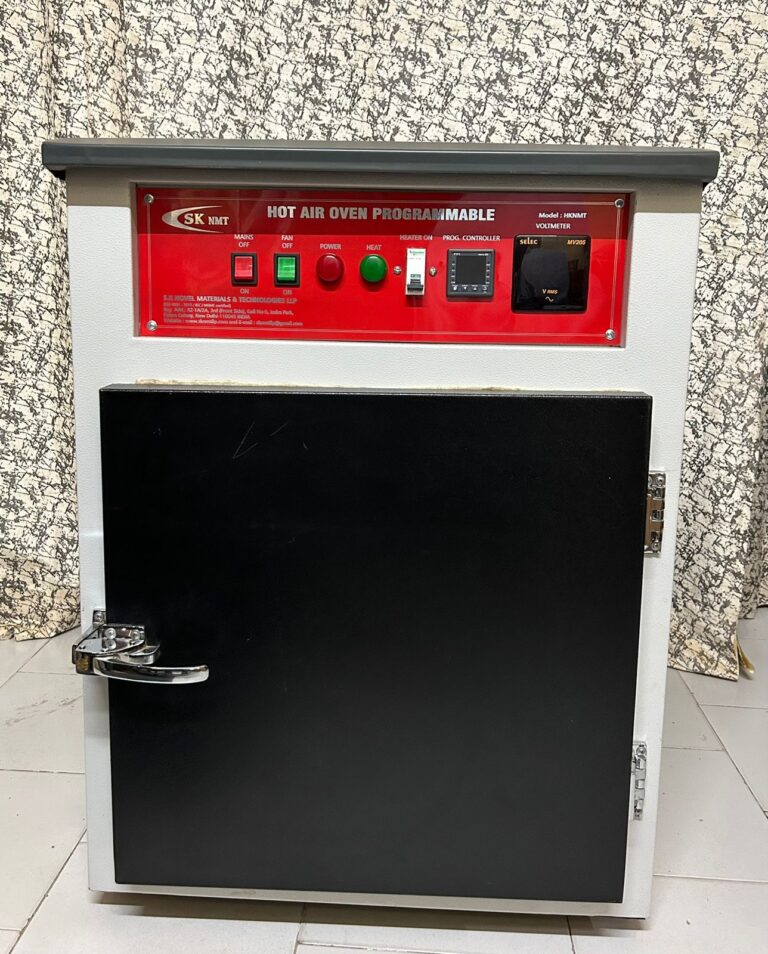Hot Air Oven (Programmable)
Hot air ovens, also known as forced convection ovens or drying ovens, are used in laboratories and industrial settings for various applications, such as drying, curing, sterilization, and heat treatment of samples or materials. The specifications of hot air ovens can vary depending on the model and manufacturer. However, here are some common specifications you may find:
- Temperature Range: Hot air ovens typically have a temperature range that can vary from ambient temperature up to high temperatures, such as 200°C, 300°C, 400°C, or higher. The specific temperature range will depend on the model and intended application.
- Temperature Control: Hot air ovens feature a temperature control system to accurately set and maintain the desired temperature. This can be achieved through analog or digital temperature controllers with adjustable setpoints and often with temperature display.
- Uniformity and Stability: Uniform temperature distribution and stability within the oven chamber are important for consistent and reliable results. Hot air ovens often specify the temperature uniformity and stability, typically within a certain percentage deviation from the set temperature.
- Chamber Size and Capacity: Hot air ovens come in various chamber sizes to accommodate different sample sizes or quantities. The chamber size is specified in terms of internal dimensions, such as length, width, and height, or in terms of volume (e.g., in liters). It is important to select an oven with a chamber size suitable for the intended application.
- Heating System: Hot air ovens typically use an electric heating system, such as heating elements made of materials like Kanthal, to generate heat within the chamber. Some models may also have a fan or blower for improved heat distribution and uniformity.
- Timer Function: Many hot air ovens include a timer function that allows you to set a specific duration for your process. The timer can automatically shut off the oven after the set time has elapsed.
- Ventilation: Hot air ovens may have ventilation features to allow for the release of moisture or fumes during the heating or drying process. This can include adjustable vents or exhaust ports to control airflow and prevent the buildup of pressure or condensation within the chamber.
- Safety Features: Hot air ovens often include safety features such as over-temperature protection, door interlocks, and alarms to ensure safe operation. Some models may also have an automatic shutdown feature in case of temperature deviations or other malfunctions.
- Construction and Insulation: Hot air ovens are typically constructed with durable materials such as stainless steel or powder-coated steel for long-term use. They may also have insulation to minimize heat loss and maintain temperature stability.
- Power Requirements: Hot air ovens require electrical power to operate. The power requirements, stated in watts or kilowatts, can vary depending on the size and heating capacity of the oven. It is important to ensure that the power supply matches the specifications of the oven.
Aluminum Copper (Al/Cu), Aluminum Chromium (Al/Cr), Aluminum Magnesium (Al/Mg), Aluminum Silicon (AlSi), Aluminum Silicon Copper (Al/Si/Cu), Aluminum Silver (Al/Ag), Aluminum Vanadium (AlV), Calcium Nickel Chromium Iron (Ca/Ni/Cr/Fe), Cerium

